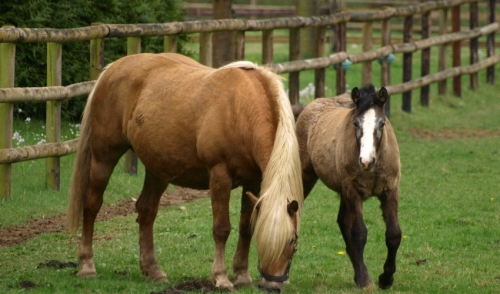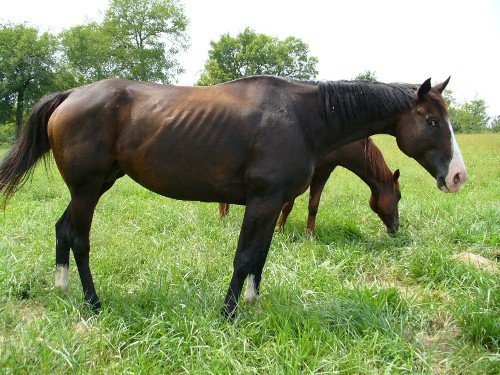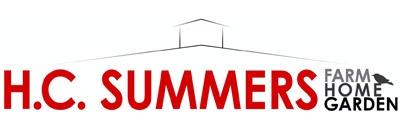
Common Causes of Poor Body Condition and Performance
The first step in determining why your horse is not eating well, losing weight or failing to thrive is to examine his nutritional program. Your Purina Certified Expert Dealer or Sales Specialist can help you with this process. Careful assessment of your horses eating habits and diet may be very revealing. Here are some basic questions to ask:
Is my horse properly taking in, chewing and swallowing both forage and feed? – By observing your horse while eating hay, grass and feed, you may find that while he is taking in food he may not be actually chewing and/or swallowing it – this is especially common in older horses with poor dentition that may be quidding forages or dropping feed. The horse appears to be eating well, but in actuality the forage or feed is actually balling up in the cheeks and then being spit out by the horse.
Is the forage high quality and available in sufficient quantities? – It is not uncommon to find that hay and pasture that appear to be of good quality are actually poorly digestible or low in certain nutrients. By having your hay and pasture grass tested you can assess the nutrient content and digestibility of your forage source. Additionally, most people feed hay by the flake and do not weigh it. There is a lot of variability in the weight of a flake of hay that can be dependent on hay type and the way it was baled. Weighing hay is a good way of determining that you are feeding enough. While it is not possible to weigh the grass your horse is taking in while grazing, careful inspection of pastures to ensure that there is an adequate quantity of edible grass present is a good idea.
Am I feeding the right type of concentrate for my horses’ lifestage and lifestyle?- Horses in different stages of life and with different levels of activity will have different nutrient and caloric requirements. Choosing a feed to fit your horses’ lifestage and lifestyle will help to ensure that those requirements are being met
Am I feeding enough of the right type of feed? Since most people feed by the “scoop” rather than by weight, if is often easy to overestimate the amount of feed you are providing. Weighing out your feed will help. Additionally, be sure to consult the feeding directions on the back of the bag. Most feeds are formulated in such a way that a minimum feeding rate is required to provide for the nutrient and calorie requirements of a particular weight, lifestage and lifestyle. For example, you may be feeding your horse 5 year old 1000 lb. horse in light work one scoop of Strategy twice a day but he is losing weight. You decide to weigh out one scoop of Strategy and find that your scoop holds one pound of Strategy, therefore you have been feeding 2 lb./day total. Strategy is formulated to be fed at a minimum rate of 3-4 lb/day to an adult 1000 lb horse in light work in order to provide that basic nutrients and calories a horse of that description requires. So even though you thought you were providing an adequate amount of feed, it turns out that based on weight, you weren’t and you need to increase the volume fed.
If it is determined that your horses nutritional program is adequate to provide for it’s needs, the next step is determining if your parasite control program is effective. New discoveries of parasite resistance and the high prevalence of parasites not routinely detected in fecal examinations (such as tapeworms and encysted small strongyles) have now made it imperative to consult with your veterinarian to determine if the measures you are taking to control parasites in your horse are appropriate and effective.
Once you have ruled out nutritional deficiencies and parasite issues, it is time to begin exploring the possibility that a medical issue may be the source of your horses’ poor body condition or performance. One of the most common manifestations of health problems in horses is poor feed consumption and weight loss. Trying to discover the ultimate cause for this can be a long and costly endeavor for horse owners, and very frustrating for veterinarians. The following outline covers some of the more common medical causes of poor intake and weight loss. This outline is by no means all-encompassing, but it at least can offer a place to start.
I. Medication – many medications, particularly nonsteroidal anti-inflammatory drugs (NSAIDs) and antibiotics can induce adverse effects on the gastrointestinal tract and other organ systems.
A. NSAID’s – drugs in this category include: Bute (phenylbutazone), flunixin megulmine (Banamine), ketoprofen (Ketofen), naproxen (Equiproxen), firocoxib (Equioxx). These drugs are often used in combination, particularly in athletic horses, for musculoskeletal inflammation and pain.
Problems encountered when using these drugs include: overdosing, chronic usage, multi-drug interactions, and hypersensitivity in certain horses (especially to Bute). These drugs can produce oral, esophageal gastric, and colonic ulcers. They can also produce kidney damage and liver toxicity – All of which can manifest in poor appetite and weight loss. Clinical signs associated with adverse effects to these drugs include: weight loss, diarrhea, inappetance, colic, poor hair coat/hoof quality, anemia, low protein (hypoproteinemia).
B. Antibiotic therapy – antibiotics are used to treat a wide range of bacterial infections. Commonly used antibiotics in adult horses include: penicillin, trimethoprim/sulfa, metronidazole, ceftiofur (Naxcel, Excede), enrofloxacin (Baytril), gentamicin. Adverse effects can include allergic reactions, diarrhea, renal damage and liver toxicity – All of these reactions can result in inappetance and weight loss.
Certain antibiotics, including trimethoprim/sulfa and penicillin, have been more commonly associated with diarrhea in horses. However, it should be noted that any antibiotic has the potential to induce an adverse effect. Diarrhea is thought to be induced by a disruption of the normal gut microflora due to the antibiotics’ action on the bacterial population of the gut.
II. Medical Conditions – there are numerous medical conditions that can result in poor feed intake and utilization. Below are some of the more commonly seen conditions.
A. Oral/dental conditions – oral ulcers, oral defects (parrot mouth, missing incisors), jaw injuries, wave mouth, dental hooks and points, retained caps and missing molars can all affect chewing and grinding which is essential to proper feed utilization in the gut. Additionally, injuries or neurological conditions can affect the lips, tongue and cheeks making it difficult for the horse to pick up feed and chew it adequately.
B. Esophageal abnormalities – tumors, ulcers, erosions, strictures (particularly those associated with prior episodes of choke) and neurological abnormalities affecting swallowing and peristalsis (passage of feed down the esophagus and into the stomach) can all affect feed consumption.
C. Gastric issues – ulcers, cancer, and delayed gastric emptying can greatly affect appetite and intake amounts leading to weight loss.
D. Small intestinal abnormalities – can lead to maldigestion and malabsorption of nutrients preventing the horse from effectively utilizing what he is eating. These conditions may be infectious or inflammatory in origin, or due to cancers such as lymphoma. Many of these conditions are chronic.
E. Colitis- this is a very broad term for inflammation of the large intestine. Colitis can be caused by many different things, and usually results in at least some degree of diarrhea and protein loss into the gut. This category can be broken down into different classes of causes: Infectious – Salmonella, Clostridium sp., Lawsonia intracellularis, Neorickettsia risticii (Potomac Horse Fever); Parasitic – Strongylosis, bots, cyathostomiasis (encysted small strongyles); Toxic- NSAID’s, antibiotics, cantharidin (blister beetle) toxicosis, arsenic poisoning; Miscellaneous – carbohydrate overload, sand enteropathy.
F. Colic – horses who have undergone severe episodes of colic and/or colic surgery commonly experience restricted access to feed, inappetance (sometimes prolonged), poor gut motility, poor absorption, and fragile bowel tissues all while faced with an increased energy demand due to the healing process. Lack of intake in the presence of increased energy demand can result in very rapid and, often profound, weight loss.
G. Age – aging horses can experience many problems that can result in poor intake and weight loss including (but not limited to): Cushing’s syndrome (PPID), diarrhea due to poor water absorption in the large colon, dental issues such as tooth loss and wave mouth, decreased saliva production leading to difficulty swallowing and poor digestion of feed, pain associated with arthritis, chronic diseases of the kidneys and liver, and loss of nutrient absorptive capacity in the small and large intestine.
H. Respiratory diseases – long-term respiratory diseases such as pleuropneumonia and recurrent airway obstruction (RAO, heaves) greatly increase a horse’s calorie needs (due to increased work of breathing and high inflammatory states) while at the same time often suppressing appetite. Additionally with RAO, dietary restrictions with regard to hay and dusty grains may be in place, and many of these horses must be kept outdoors where they may be exposed to inclement weather (further increasing caloric demand). The end result may be significant loss of body condition.
I. Chronic diseases – virtually every chronic disease will result in poor feed efficiency and some loss of body condition. Specifically, melanoma, lymphoma, liver and kidney disease can affect horses of all ages but are most prevalent in senior horses, and can lead to ill thrift, poor body condition and hair coat.
J. Chronic pain – the negative effect that pain can have on the appetite and calorie needs of horses cannot be underestimated. Laminitis, osteoarthritis/degenerative joint disease, fractures, tendon and ligament injuries or degeneration and Navicular syndrome are just a few examples of musculoskeletal disorders that can result in sustained pain in horses and lead to dramatic weight loss. Regardless of the source of the pain, the detrimental impact on the horses’ appetite and body condition will be significant.
